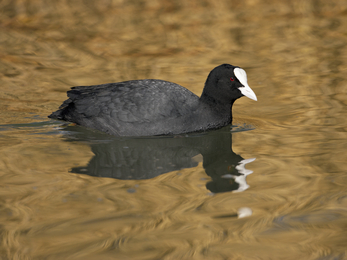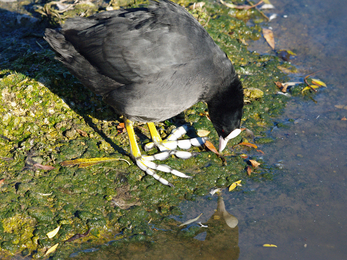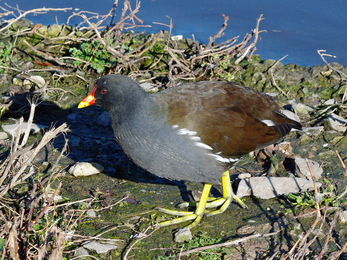As a common sight on our local chalk streams, coots and moorhens are the cause of much confusion. In addition to being mistaken for ducks (they’re actually in the rail and crake family), these water birds look quite alike and are often found in the same places. Spot one fleetingly, or from a distance, and you'll need some detective skills to tell them apart.
By far the easiest way to recognise these birds is by their faces. Both birds have 'frontal shields', which essentially means that their beaks extend up their foreheads. The shields and beaks of moorhens are bright red except for a yellow tip at the bottom. The shields and beaks of coots are white or pale pink in colour - in fact, this is where the phrase “bald as a coot” comes from!
Pictured below from left to right (click to expand): Adult coot / adult moorhen.








